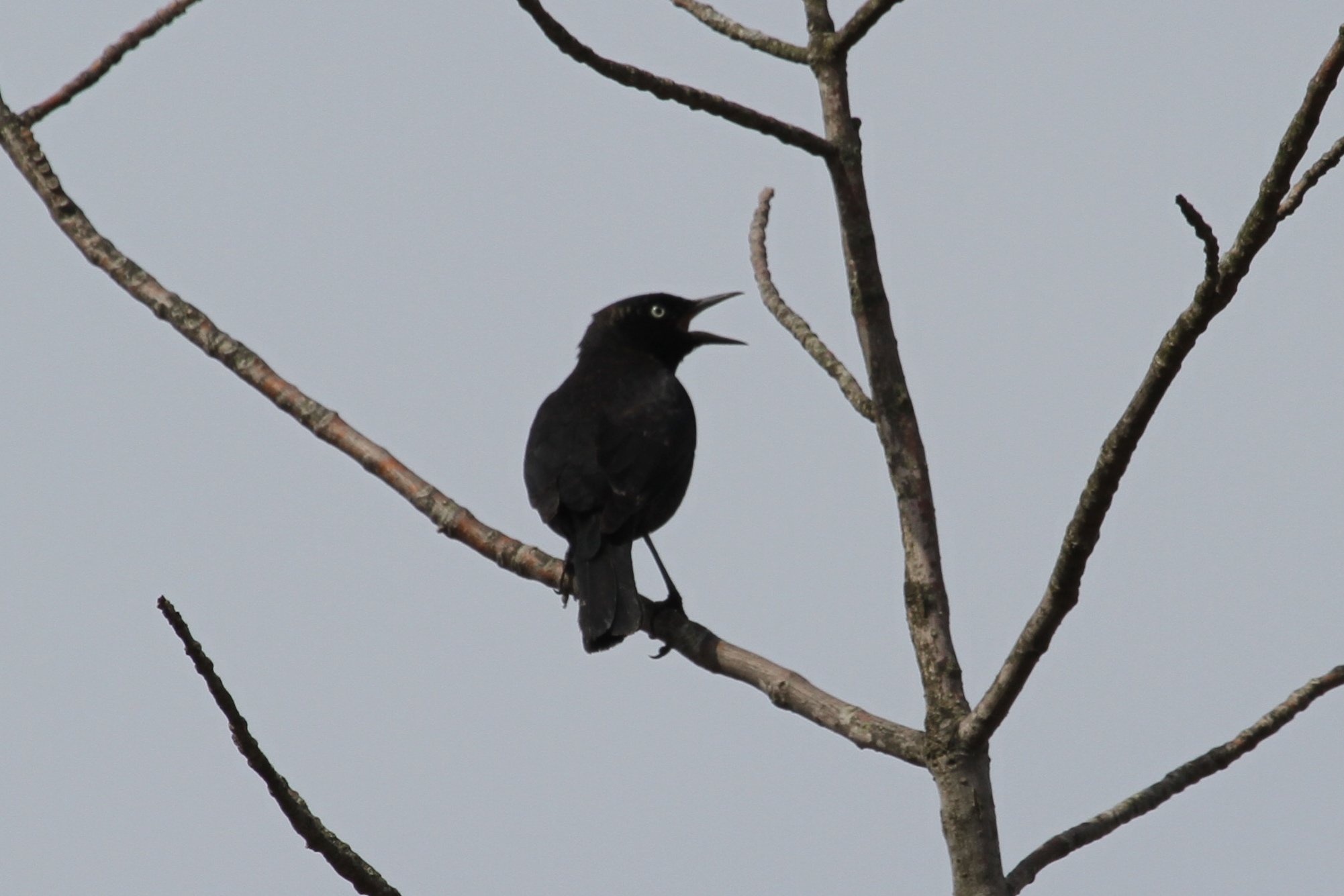Of all the fruits: cherries. Of all the months: October. Of all of the holidays: Thanksgiving. Of all of the birds: Rusty Blackbird. But--of all the groups of birds: shorebirds.
All birders have his or her favorite group or family of birds: the raptors in migration or the sparrows in a field. For many it’s easy: warblers in spring. For me, it’s shorebirds. Perhaps because I do associate them with water, the shore. Perhaps because I have spent so little time with them, the birds here in the Hudson Valley uncommon except in migration and even then there are few. Perhaps this group of birds retains a certain mystery because they are so elusive to me. And so when my friend Peter started reporting big numbers of shorebirds—a dozen Pectoral Sandpipers, a White-rumped Sandpiper, plus over forty Snipe at the Vly, a swamp in the northern edge of Ulster County, I had to go.
Read MoreThere is a singer everyone has heard,
Loud, a mid-summer and a mid-wood bird,
Who makes the solid tree trunks sound again
--Robert Frost
Even if you do not know the Ovenbird, you know the distinct, emphatic song of this little warbler: Tea-Cherr, Tea-Cherr, Tea-Cherr. Teacher teacher teacher is the mnemonic, so I think of it as my bird.
Read MoreYesterday I celebrated the first day of the Rusty Blackbird Blitz by walking out into the snowy Tivoli Bays to look for a Rusty. I knew full well I would not see one in the still frozen landscape of the bays. Even the Red-winged Blackbirds have not yet returned. Still, I had to go out on snowshoes to roll out the carpet for the Rusty should it decide to stop over later in the spring.
The first time I saw a Rusty Blackbird was three years ago on the muddy causeway of Cruger Island Road. It was the second spring of my bird-obsessed life, when every bird felt a miracle. My friend Peter introduced us: “Look now,” he said, “this is a bird that will be extinct in our lifetime.” What I saw was an ordinary enough bird, black overall, with a bit of brown rust at the nape, and then eyes, white as if they were bottomless. The bird had a grating song, like a squeaky hinge. At that time I doubted Peter’s pronouncement—it felt too full of doom—but research proved he might be right: Rusty populations have plummeted in the past century, with an 88% population reduction. Though scientists estimate that somewhere between 158,00 and 2 million remain, this once abundant bird is in a population free-fall.
Read MoreIn January of 2007, my father and I drove west from Pennsylvania to Arizona together, stopping in Kentucky, Louisiana, Texas. He ate oysters, while I took walks, and together we marveled over our vast country by reading aloud billboards, commenting on the mesquite, the ugliness of strip malls, the trash by the side of the road. The one place he wanted to stop was Aransas National Wildlife Refuge on the upper Texas Coast. Why? To see Whooping Cranes on the bird’s wintering grounds. My father was a novelist, a bookish man, not a naturalist. But the Cranes captured his imagination and he wanted to see them. Aransas, established in 1937 to protect migrating birds and especially the Whooping Crane, is a reliable place to see the birds in winter.
Read More


